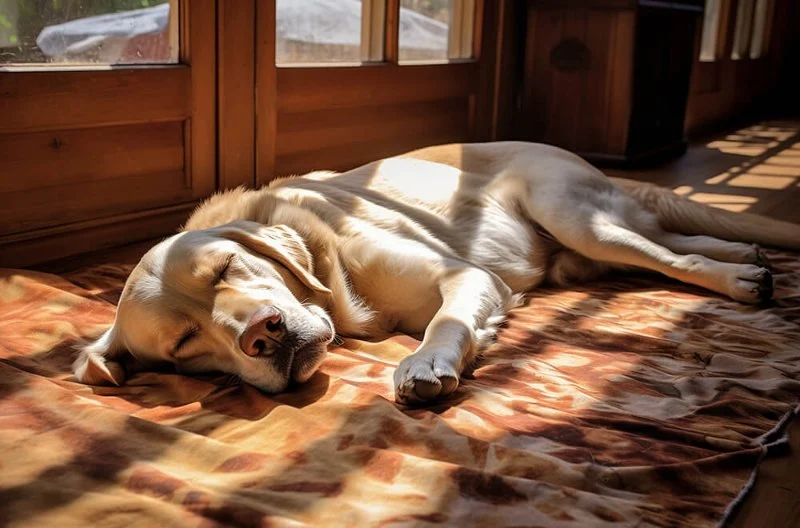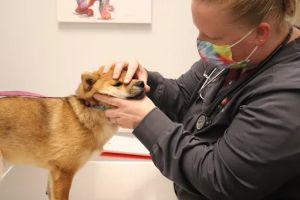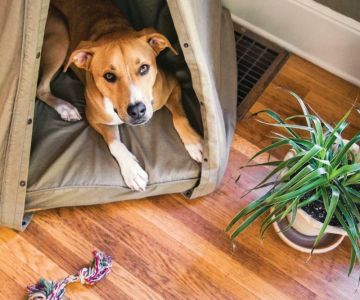
- Understanding Heatstroke in Pets
- Signs of Heatstroke in Pets
- Preventing Heatstroke in Pets
- Cooling Your Pet Down Effectively
- Real-Life Examples of Heatstroke Prevention
Understanding Heatstroke in Pets
Summer is a time for outdoor fun and play, but it also brings the risk of heatstroke for pets. Just like humans, pets can suffer from heat-related illnesses, and heatstroke is one of the most dangerous conditions they can face during the warmer months. Unlike humans who can sweat to cool down, pets rely on panting and other cooling mechanisms to regulate their body temperature.
Heatstroke occurs when a pet’s body temperature rises too high, causing severe health complications. It’s essential to recognize the symptoms of heatstroke and take preventative measures to keep your pet safe during hot weather. Understanding the risks and signs of heatstroke is the first step in preventing this life-threatening condition.
Signs of Heatstroke in Pets
Recognizing the symptoms of heatstroke in pets is crucial for preventing serious health issues. Heatstroke can develop quickly, and the sooner you notice the signs, the faster you can act. Here are some common signs that your pet may be suffering from heatstroke:
1. Excessive Panting or Drooling: One of the first signs of heatstroke is rapid or excessive panting. You may also notice your pet drooling more than usual as their body tries to cool itself down.
2. Red or Pale Gums: Check your pet’s gums. If they are unusually red or pale, this could be a sign that they are overheating and struggling to regulate their body temperature.
3. Vomiting or Diarrhea: In some cases, heatstroke can lead to gastrointestinal distress. Vomiting or diarrhea can indicate that your pet is suffering from heat-related illness.
4. Weakness or Collapse: A pet that is overheating may become lethargic, weak, or even collapse. If this happens, immediate medical attention is needed.
5. Rapid Heartbeat or Breathing: Heatstroke can cause your pet’s heart rate to increase, leading to shallow or rapid breathing as their body tries to cool down.
Preventing Heatstroke in Pets
Preventing heatstroke in pets is far better than having to deal with the consequences. Fortunately, there are several steps you can take to keep your pet cool during the summer months:
1. Limit Outdoor Activity: Avoid exercising or walking your pet during the hottest parts of the day, usually between 10 a.m. and 4 p.m. Instead, plan walks for early mornings or late evenings when the temperatures are lower.
2. Provide Shade and Fresh Water: Always ensure that your pet has access to fresh water and a shady spot to relax in when outside. Keeping your pet hydrated is key to preventing overheating.
3. Use Cooling Products: There are a variety of pet cooling products available, including cooling mats, vests, and bandanas. These products help lower your pet’s body temperature and can be especially useful during outdoor activities.
4. Never Leave Your Pet in a Car: One of the most dangerous things you can do is leave your pet in a parked car. Even with the windows cracked, the inside of a car can heat up to dangerous levels in just minutes, leading to heatstroke and even death.
5. Avoid Hot Surfaces: Asphalt, sand, and concrete can become extremely hot in the summer, potentially burning your pet’s paws. If the ground is too hot for you to walk on barefoot, it’s too hot for your pet.
Cooling Your Pet Down Effectively
If you notice that your pet is starting to overheat or show signs of heatstroke, it’s important to act quickly. Here are some steps to help cool your pet down effectively:
1. Move Your Pet to a Cooler Area: Immediately move your pet to a shaded area or an air-conditioned space. Avoid continuing outdoor activities until they have cooled down.
2. Offer Water: Give your pet small sips of water to help hydrate them. Don’t force them to drink large amounts at once, as it may cause them to vomit.
3. Cool with Water: Use cool (not cold) water to gently dampen your pet’s body, especially around their paws, belly, and neck. You can also use a damp towel to wipe them down.
4. Use Ice Packs: If your pet is in distress, apply ice packs wrapped in a towel to areas like their armpits, groin, or the back of their neck. Avoid direct contact with ice to prevent shock.
5. Visit a Vet: If your pet’s condition doesn’t improve quickly or they are showing severe symptoms of heatstroke, take them to the veterinarian immediately for further treatment.
Real-Life Examples of Heatstroke Prevention
Many pet owners have shared their experiences with heatstroke prevention, highlighting how small changes can make a big difference. For example, one dog owner began limiting their dog’s exercise to early mornings and using a cooling vest during the summer months. This simple change helped prevent their dog from experiencing heatstroke and kept them active without the risk of overheating.
Another pet owner found that providing constant access to fresh water and making sure their dog had a shaded area to rest in when outside dramatically improved their pet’s comfort during the summer. They also invested in a cooling mat for their dog’s bed, which became a favorite resting spot during the hottest part of the day.
At Pet & Puppy, we offer a range of cooling products, including cooling mats, vests, and portable water bottles, to help keep your pet safe and cool during the summer months. Explore our collection for the best solutions to protect your furry friend from heatstroke.









 1214 Central Store0.0 (0 reviews)
1214 Central Store0.0 (0 reviews) Burlington Pet Hospital4.0 (118 reviews)
Burlington Pet Hospital4.0 (118 reviews) ArkVets4.0 (426 reviews)
ArkVets4.0 (426 reviews) Hartzell Veterinary Service: Charles W. Hartzell, DVM and Sue Ann Hartzell, DVM4.0 (105 reviews)
Hartzell Veterinary Service: Charles W. Hartzell, DVM and Sue Ann Hartzell, DVM4.0 (105 reviews) Noah's Ark Animal Hospital4.0 (163 reviews)
Noah's Ark Animal Hospital4.0 (163 reviews) Jasper Pet Clinic4.0 (285 reviews)
Jasper Pet Clinic4.0 (285 reviews) Transitioning Training Methods as Pet Ages: Adapting Techniques for Senior Pets
Transitioning Training Methods as Pet Ages: Adapting Techniques for Senior Pets How to Read & Understand Pet Nutrition Labels for Your Pet's Health
How to Read & Understand Pet Nutrition Labels for Your Pet's Health How to Choose the Right Pet Supplement Brand: Essential Tips for Pet Owners
How to Choose the Right Pet Supplement Brand: Essential Tips for Pet Owners How Much Should You Feed Your Pet? Portion Guide by Age & Breed
How Much Should You Feed Your Pet? Portion Guide by Age & Breed How to Create a Pet Health Journal: Metrics to Track for Better Pet Care
How to Create a Pet Health Journal: Metrics to Track for Better Pet Care What Breed-Specific Health Issues You Should Be Aware Of
What Breed-Specific Health Issues You Should Be Aware Of